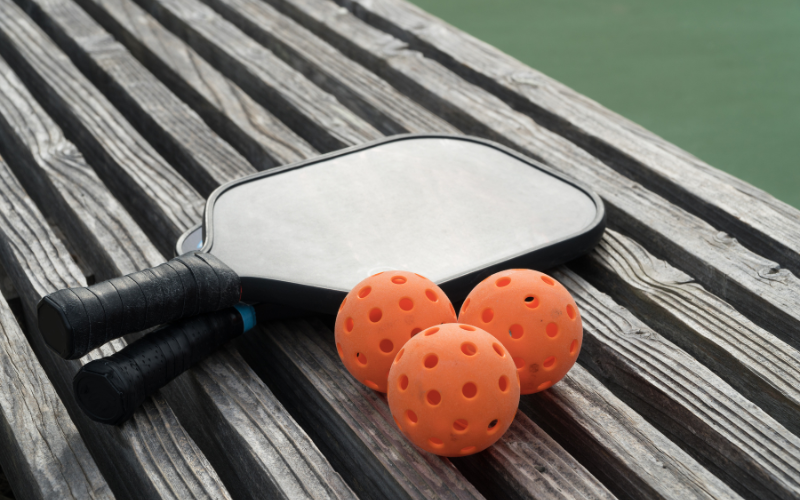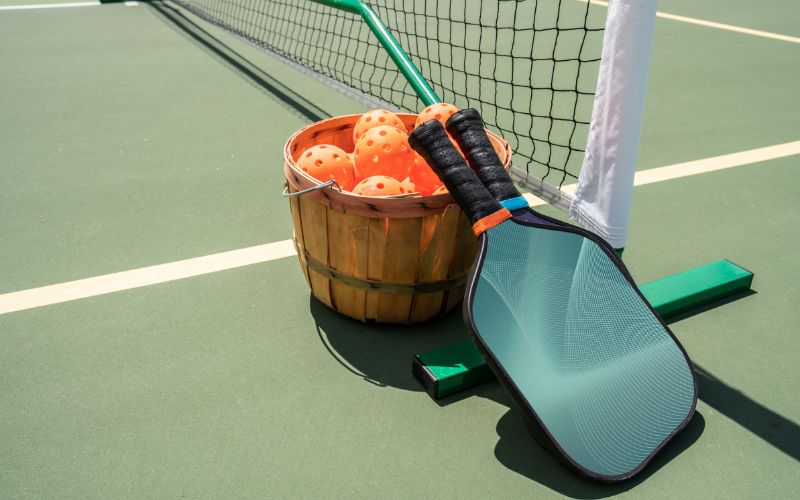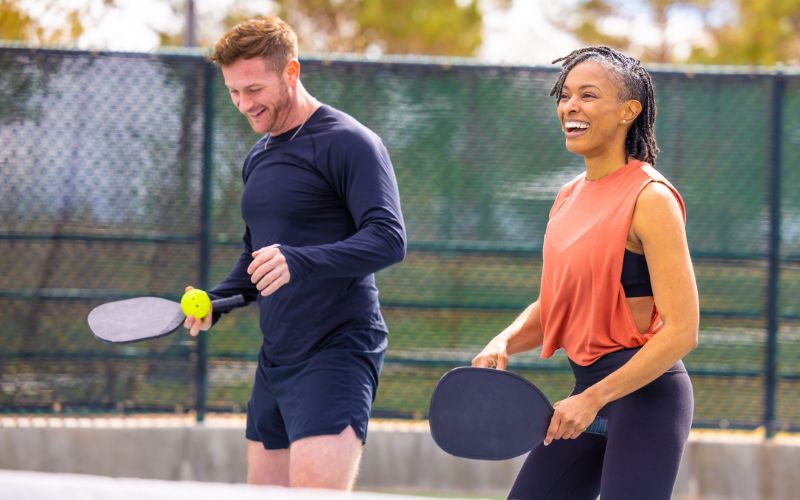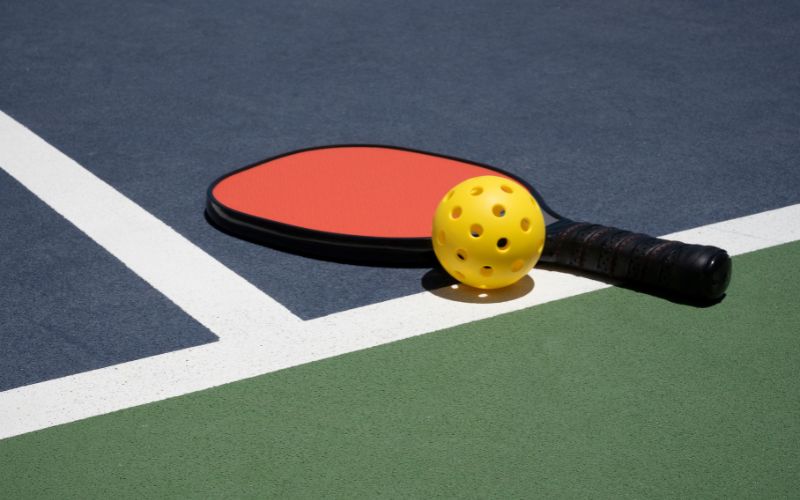In the realm of pickleball, equipment holds paramount importance. Among the essential gears, the pickleball paddle stands out as a crucial tool that can significantly impact gameplay. With a wide array of options available, ranging from basic to premium, players often wonder: do more expensive pickleball paddles truly make a difference? Let’s delve into this question and explore the nuances surrounding paddle selection in the world of pickleball.
Understanding Pickleball Paddles: A Brief Overview
Before delving into the debate surrounding paddle pricing, it’s essential to understand the fundamental components and characteristics of pickleball paddles.
Anatomy of a Pickleball Paddle
A typical pickleball paddle consists of several key elements, including the face, core, edge guard, handle, and butt cap. Each component contributes to the performance and durability of the paddle, influencing how it feels and performs during gameplay.
The Debate: Expensive vs. Affordable Pickleball Paddles
The question of whether more expensive pickleball paddles offer tangible benefits over cheaper alternatives has sparked considerable debate among players and enthusiasts alike.
1. Face
The face of a pickleball paddle refers to the hitting surface, where players make contact with the ball. It’s typically made of materials like graphite, carbon fiber, composite, or fiberglass. The texture and composition of the face impact the paddle’s ability to generate spin, control shots, and provide a consistent feel during play.
2. Core
The core lies beneath the face and is responsible for the paddle’s structural integrity and responsiveness. Common core materials include polymer, Nomex, aluminum, and honeycomb. Each material offers unique characteristics, such as varying levels of power, touch, and control. The core’s construction directly affects the paddle’s overall feel and performance on the court.
3. Edge Guard
The edge guard surrounds the perimeter of the paddle, providing protection against impact and wear. Typically made of durable materials like rubber or plastic, the edge guard helps prevent damage to the paddle’s edges during aggressive play and accidental collisions with the court surface or other equipment.
4. Handle
The handle is the portion of the paddle that players grip during gameplay. It’s crucial for providing comfort, control, and stability while executing shots. Handles come in various shapes, sizes, and grip materials to accommodate different hand sizes and preferences. A comfortable and ergonomic handle enhances player confidence and reduces the risk of fatigue and discomfort during extended play sessions.
5. Butt Cap
The butt cap is located at the bottom end of the handle and serves as a counterbalance to the paddle’s weight distribution. It adds stability and balance to the paddle, allowing players to maintain control and maneuverability during fast-paced rallies. Butt caps are often made of rubber or other impact-resistant materials to withstand the rigors of competitive play.
Each of these components works together synergistically to create a pickleball paddle that meets the specific needs and preferences of players across various skill levels and play styles. By understanding the anatomy of a pickleball paddle, players can make informed decisions when selecting equipment, considering factors such as materials, construction, and design features to optimize their on-court performance and enjoyment of the game.
The Case for Expensive Paddles
Proponents of premium pickleball paddles argue that the higher price tag often reflects superior craftsmanship, quality control, and the use of advanced materials. Manufacturers of high-end paddles prioritize innovation and performance, incorporating cutting-edge technologies and materials to enhance playability and durability.
Advanced Materials and Technologies
Many premium paddle manufacturers utilize carbon fiber, graphite, and other composite materials to construct paddles that are lightweight yet durable. These materials offer enhanced strength and stability, allowing for greater power and control during play.
Enhanced Performance Features
Expensive paddles often boast innovative features such as honeycomb core constructions, elongated paddle designs, and ergonomic grips designed to optimize performance and comfort on the court. These technological innovations aim to improve ball control, spin, and accuracy, giving players a competitive edge during matches.
The Argument for Affordable Paddles
Conversely, advocates of cheaper pickleball paddles emphasize affordability and accessibility for players of all skill levels. While expensive paddles may offer advanced features, cheaper alternatives can still provide adequate performance and durability for recreational and beginner players.
Accessibility and Affordability
For beginner players or those on a tight budget, affordable paddles offer a cost-effective entry point into the sport. These paddles may lack some of the premium features found in more expensive models, but they still provide a viable option for casual play and skill development.
Versatility and Functionality
While expensive paddles may excel in certain aspects of gameplay, cheaper alternatives can still deliver solid performance across a range of playing styles and conditions. For recreational players seeking a reliable all-around paddle, affordability may take precedence over premium features.
Factors to Consider When Choosing a Pickleball Paddle
When evaluating pickleball paddles, it’s essential to consider a range of factors beyond price alone. Play style, skill level, personal preference, and budget all play a role in determining the right paddle for individual players.
Understanding Your Play Style
Different paddle designs cater to specific play styles and preferences. Players who prioritize power and aggression may prefer paddles with larger surface areas and heavier weights, while those focused on control and maneuverability may opt for lighter paddle and more maneuverable options.
Assessing Paddle Technology and Construction
Beyond price, consider the technological features and construction of the paddle. Look for paddles with durable materials, advanced core designs, and enhanced edge guards to ensure long-term performance and durability on the court.
Personal Preference and Comfort
Ultimately, the right pickleball paddle is one that feels comfortable and responsive in your hands. Take the time to test different paddles and consider factors such as grip size, weight distribution, and balance to find the paddle that best suits your individual preferences and playing style.
Raw Materials
The quality of the raw materials used in constructing a pickleball paddle significantly influences its performance and durability. High-quality materials such as carbon fiber, graphite, and composite materials offer superior strength, responsiveness, and impact resistance compared to lower-grade alternatives. These materials contribute to a paddle’s ability to generate power, control shots, and withstand the rigors of intense gameplay. Manufacturers that prioritize the use of premium raw materials produce paddles that offer enhanced performance and longevity on the court.
Quality of Manufacturing
The craftsmanship and attention to detail during the manufacturing process play a crucial role in determining the overall quality of a pickleball paddle. Premium paddle manufacturers adhere to rigorous quality control standards to ensure that each paddle meets exacting specifications and performance requirements. This commitment to quality extends to every stage of production, from material selection and paddle construction to finishing touches and packaging. Paddles manufactured with precision and care are more likely to deliver consistent performance and durability, providing players with confidence and reliability during gameplay.
Innovation
Innovation drives advancements in pickleball paddle design and technology, leading to the development of paddles that push the boundaries of performance and versatility. Manufacturers invest in research and development to explore new materials, construction techniques, and design features that enhance player experience and elevate on-court performance. Innovations such as honeycomb core construction, textured paddle faces, and ergonomic grip designs enable players to optimize power, control, and comfort during play. Paddle manufacturers that prioritize innovation continuously seek to push the envelope and redefine the standards for high-performance sporting equipment.
Conclusion: Finding the Right Pickleball Paddle
In conclusion, the debate over whether more expensive pickleball paddles make a difference ultimately boils down to individual preferences, priorities, and budgets. While premium paddles may offer advanced features and technologies, affordable alternatives can still provide satisfactory performance and durability for many players.
When selecting a pickleball paddle, consider factors such as play style, technological innovations, and personal comfort to ensure the best possible fit for your needs. Whether you opt for a high-end or budget-friendly paddle, the most important aspect is finding one that enhances your enjoyment and performance on the pickleball court.







